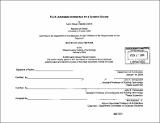FLUX : adaptable architecture for a dynamic society
Author(s)
Greene, Aaron Steven Wendel, 1978-
DownloadFull printable version (20.58Mb)
Alternative title
Adaptable architecture for a dynamic society
Other Contributors
Massachusetts Institute of Technology. Dept. of Architecture.
Advisor
John A. Ochsendorf and John E. Fernandez.
Terms of use
Metadata
Show full item recordAbstract
(cont.) Perhaps a more functional architecture that is kinetic, transformable, capable of disengagement, and reassembly could keep up with the occupants' need to have multiple programs taking place in one space, maintain economy, and alleviate the over use of energy and resources. Contemporary society is being re-defined by continuous travel and motion, resulting in the collapse of time and space--the origins of globalization, and infinite, never ceasing data transfer; both of which have propelled us into the Information Age. The resulting cultures are hybrid, more complex, and always transforming. As corporations and communities continue to expand and contract, re-locate, emerge, and vanish, their need to be capable of adapting is increasing. On Monday, the client desires a mid-rise building with an open floor plan on all levels. The following Wednesday, his company's stock has gone through the roof and his financial advisors suggest a mixed use facility, with retail space on the lower three levels and ten extra floors of office space. By Friday, his architect will have designed a sky-scrapper. These fast pace changing needs, the various forms of infrastructure that facilitate transfer, and evolving technology confront architects with a major question. Can architecture become flexible, adaptable, and transformable in order to meet the ever-changing demands of contemporary society? Infrastructure permeates every facet of our lives. It allows us to move to here and there, it brings resources, data, and entertainment to our very fingertips. It operates at various scales, and even provides stability within society. The thought of architecture fusing with or becoming like infrastructure is not a new subject matter, theorist have written about it for years. The human species has always been transient, so why the need for a new architecture? Our new technologies have also prompted the degradation of our global environment, and caused the over utilization of various natural resources.
Description
Thesis (M. Arch.)--Massachusetts Institute of Technology, Dept. of Architecture, 2004. Includes bibliographical references (p. 99-102).
Date issued
2004Department
Massachusetts Institute of Technology. Department of ArchitecturePublisher
Massachusetts Institute of Technology
Keywords
Architecture.